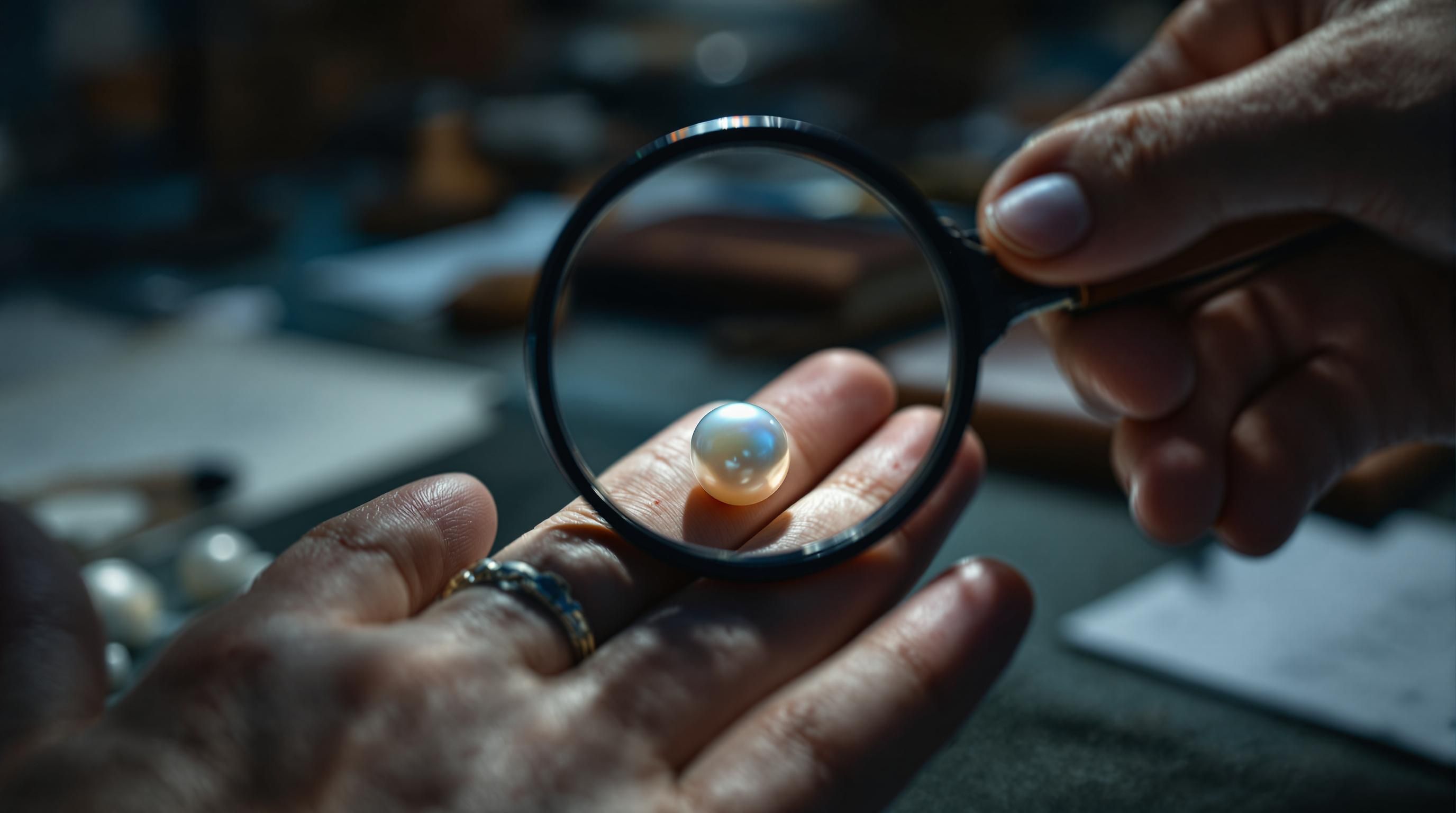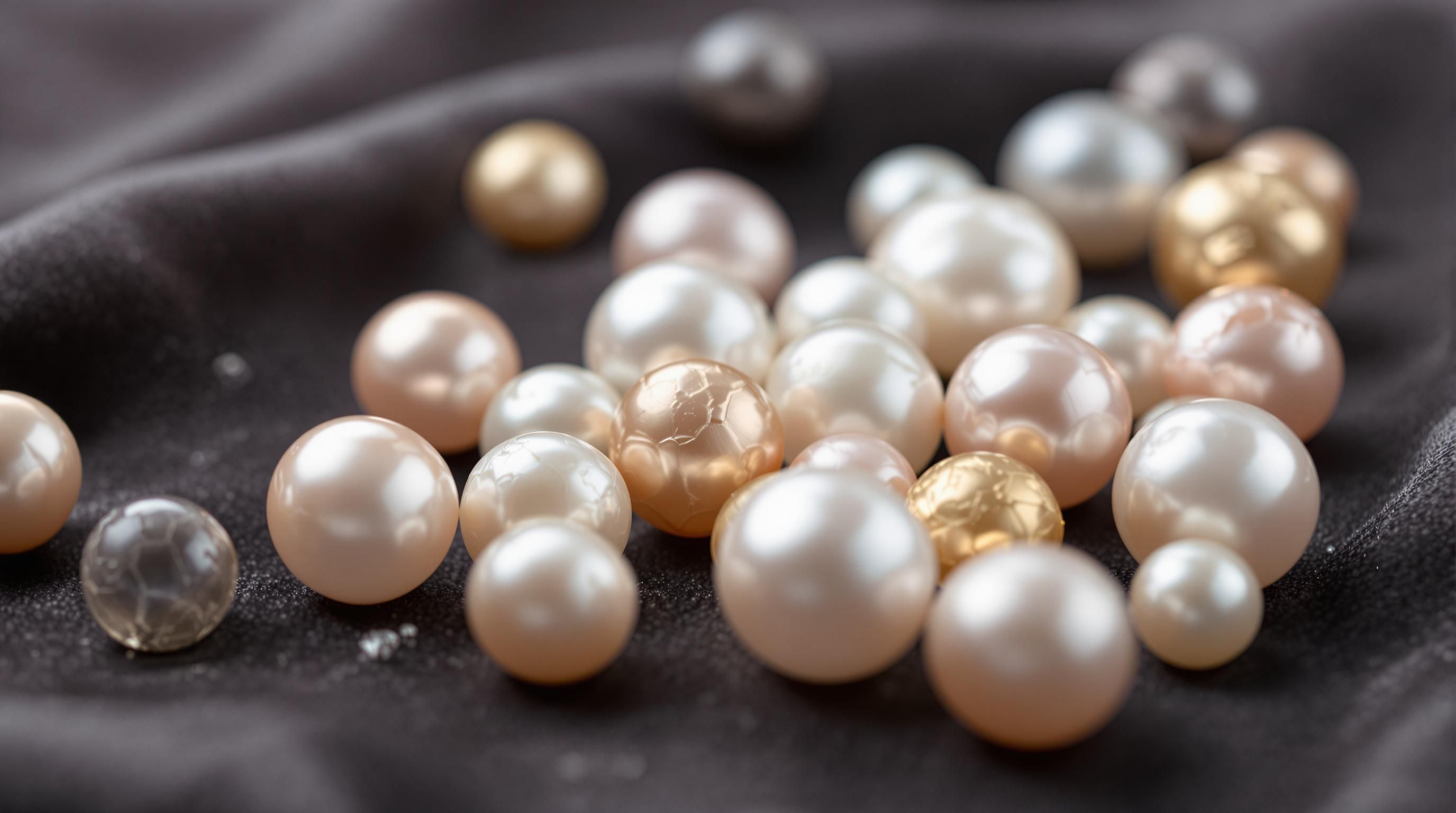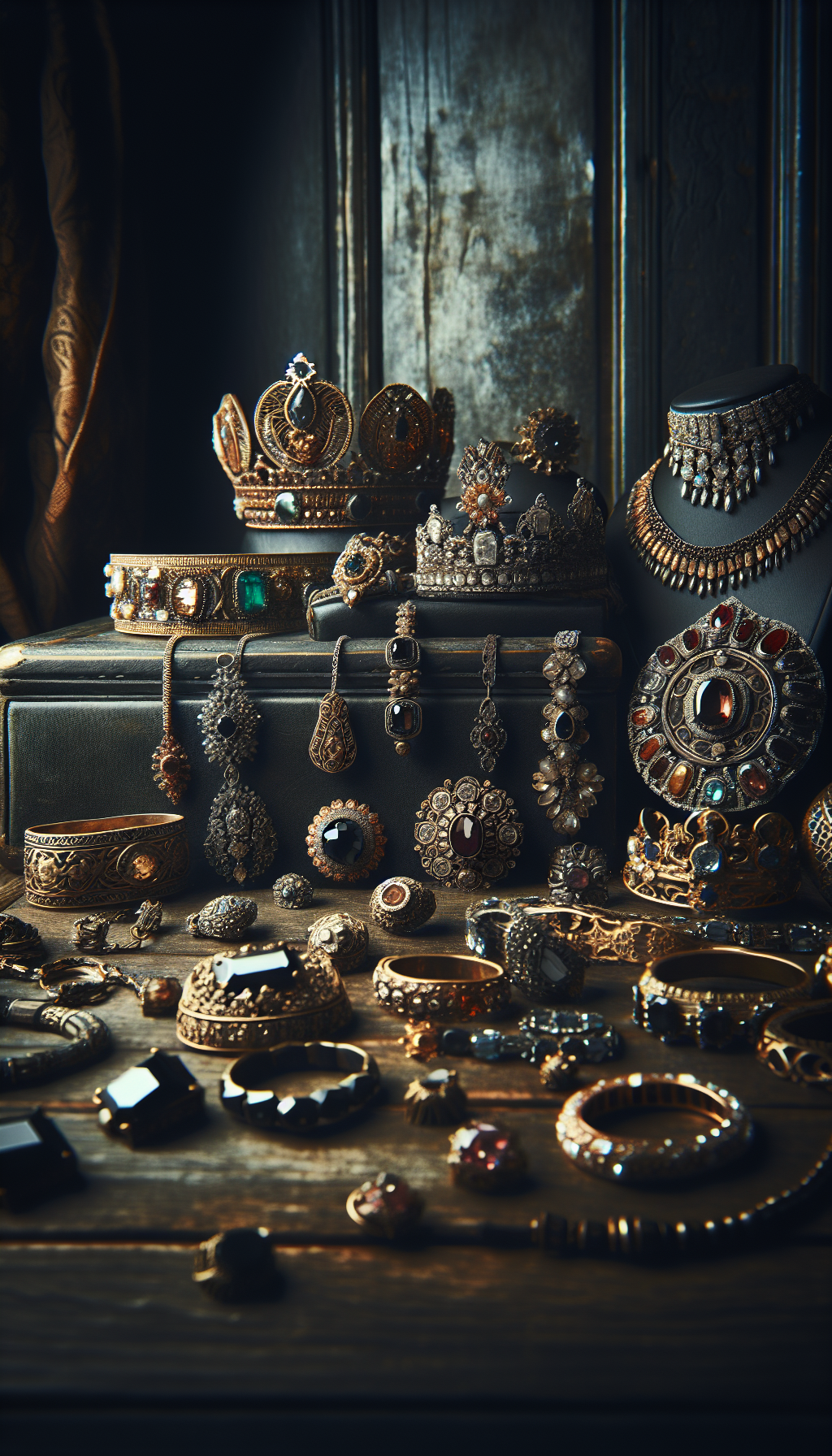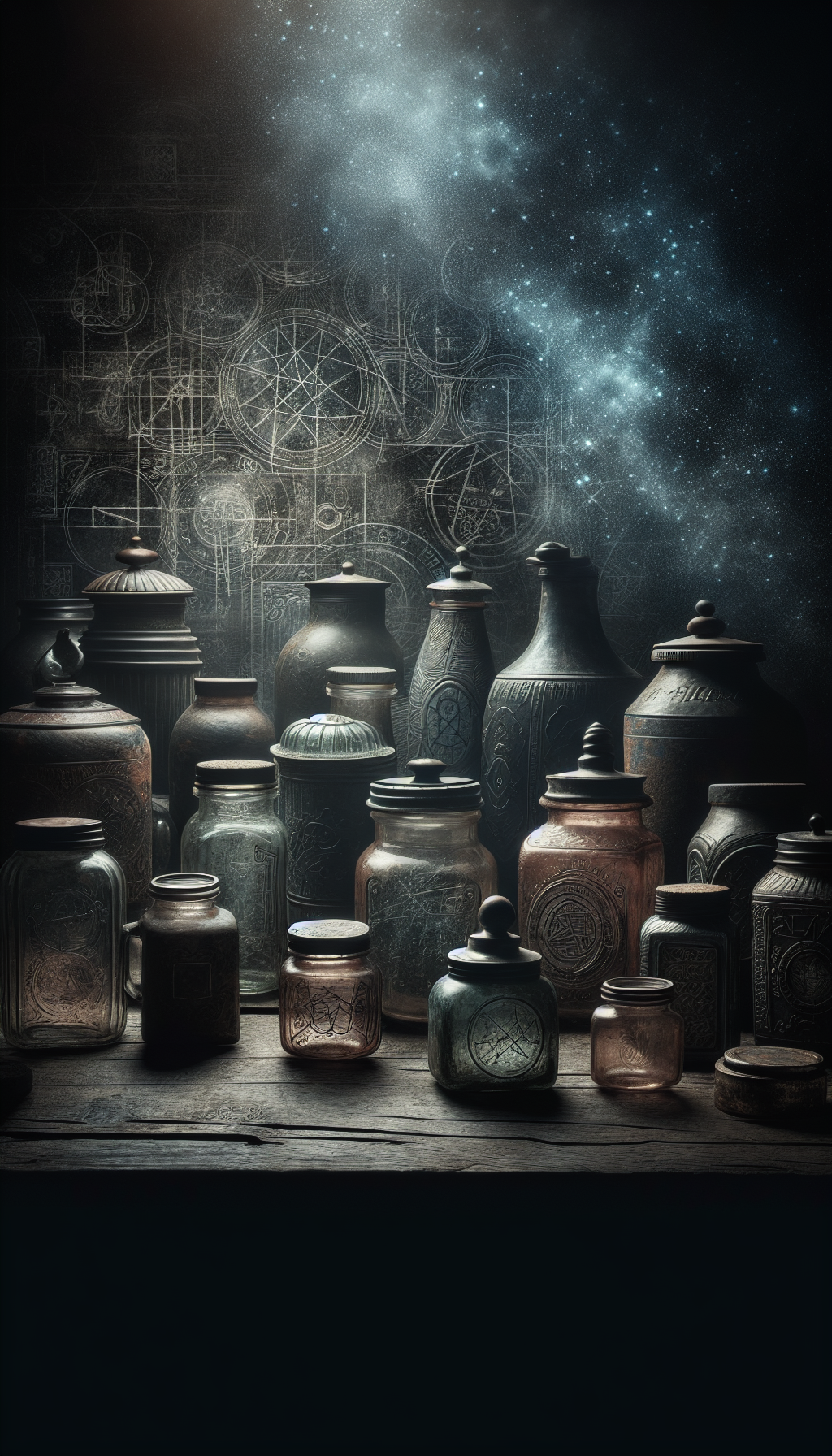Natural Pearls: Rare Treasures from the Sea
Throughout history, natural pearls have been symbols of wealth, sophistication, and status. Their scarcity in modern times has only increased their allure and value. While cultured pearls dominate today’s market, true natural pearls command premium prices due to their rarity and the impossibility of replicating their formation process.
Understanding the worth of natural pearls requires examining multiple factors that influence their value. From size and shape to color and provenance, each element contributes to a pearl’s final valuation. This comprehensive guide will explore everything you need to know about natural pearl values in 2025.
Natural Pearl Market Facts
| Statistic | Figure | Context |
|---|---|---|
| Average Value Range | $300-$1,500 | Per individual pearl |
| Premium Natural Pearls | $500-$2,000+ | Per pearl for finest specimens |
| Market Growth | 8-10% | Annual appreciation for investment-grade pieces |
Natural vs. Cultured Pearls: Understanding the Difference
Natural pearls form completely by chance when an irritant enters a mollusk in the wild, without any human intervention. The mollusk coats the irritant with nacre (mother-of-pearl) over many years. These pearls are exceedingly rare today due to overfishing, pollution, and the prevalence of cultured pearl farming.
Cultured pearls, by contrast, result from a human-initiated process where technicians deliberately insert an irritant (typically a bead nucleus and piece of mantle tissue) into farm-raised mollusks. While still genuine pearls composed of nacre, their formation is artificially triggered.
Key differences include:
- Formation Process: Natural (accidental) vs. Cultured (deliberate)
- Rarity: Natural pearls are extremely rare, while cultured pearls are produced in large quantities
- Structure: Natural pearls typically have concentric growth rings when X-rayed, while cultured pearls show a clear demarcation between nucleus and nacre layers
- Value: Natural pearls can be worth 10-100 times more than cultured pearls of similar appearance
This distinction forms the foundation of pearl valuation, with natural pearls commanding significantly higher prices in the marketplace.
Natural vs. Cultured Pearl Value Comparison
Average market prices in 2025
</tbody>
</table>
Key Factors Affecting Natural Pearl Values
1. Size
Size significantly impacts a natural pearl’s value. Measured in millimeters, larger pearls command exponentially higher prices due to their rarity. While cultured pearls can be grown to specific sizes, natural pearls rarely exceed 8-9mm in diameter.
A natural pearl that measures 10mm or larger is extraordinarily rare and can command prices tens of thousands of dollars per pearl. Each millimeter increase in diameter typically translates to a substantial percentage increase in value.
2. Shape
Perfect spherical shapes are the most valued in natural pearls, though they’re exceedingly rare. Value decreases progressively through these shape categories:
- Round: The most valuable shape, nearly perfectly spherical
- Near-Round: Slightly irregular but still appears round at first glance
- Drop/Pear: Symmetrical teardrop shapes, valued for pendant settings
- Button: Flattened on one side, often used in earrings
- Oval: Elongated rounded shape
- Semi-Baroque: Irregular but with some symmetry
- Baroque: Highly irregular with no defined shape
Interestingly, some exceptional baroque natural pearls with unique aesthetically pleasing forms can command premium prices despite their irregularity.
3. Surface Quality
The cleaner and smoother the surface, the higher the value. Surface quality is graded by the presence of:
- Blemishes: Spots, bumps, cracks, or discolorations
- Pitting: Small indentations on the surface
- Wrinkles: Wave-like surface irregularities
- Abrasions: Scratches or scuffs
Flawless natural pearls with minimal surface imperfections are exceedingly rare and priced accordingly. Even minor surface characteristics can significantly impact value.
4. Luster
Often considered the most important factor in pearl valuation, luster refers to the pearl’s reflective quality:
- Excellent: Mirror-like reflection with sharp, bright reflections
- Very Good: Very bright reflections, but not quite mirror-like
- Good: Somewhat bright reflections, but slightly hazy
- Fair: Weak, blurry reflections
- Poor: Dull, chalky appearance with minimal reflectivity
Superior luster can increase a natural pearl’s value by 50-100% compared to similar pearls with mediocre luster.
5. Color
Natural pearls occur in various colors, with certain hues commanding premium prices:
- White: Classic and traditional, highly valued with warm overtones
- Cream/Ivory: Warmer than white, with elegant appearance
- Pink: Rare and desirable, especially with strong saturation
- Gold/Champagne: Extremely rare in natural pearls
- Black: Nearly non-existent in natural pearls outside of rare Tahitian varieties
- Blue/Green: Extremely rare and valuable in natural pearls
A natural pearl with an unusual or striking color can command extraordinary prices if other quality factors are also excellent.
6. Nacre Thickness
While not externally visible, nacre thickness determines a pearl’s durability and luster. Natural pearls typically have thick, solid nacre, making this less of a concern than with cultured varieties. However, pearls with thin or damaged nacre layers will be less valuable.
7. Provenance and Historical Significance
Natural pearls with documented history or those that belonged to famous figures can achieve values far beyond their intrinsic characteristics. Historical natural pearl jewelry from royal collections or famous jewelry houses like Cartier or Tiffany & Co. regularly achieve record prices at auction.
8. Matching Quality
For multi-pearl items like necklaces, the degree of matching between pearls dramatically affects value. Perfectly matched natural pearl strands are extraordinarily rare and valuable, as finding multiple natural pearls with identical characteristics is nearly impossible.
Natural Pearl Quality Assessment Checklist
Use this checklist to evaluate the quality factors of a natural pearl
- Perfect round shape with no irregularities
- Size larger than 8mm in diameter
- Mirror-like luster with sharp reflections
- Surface free of blemishes, pits or wrinkles
- Desirable color (white, pink, or other rare hue)
- Thick, healthy nacre layer
- Documentation of provenance or historical significance
- Professional authentication certificate
Current Market Values of Natural Pearls

Individual Natural Pearls
The base price for authenticated natural pearls typically starts around $300-$500 for smaller specimens (3-5mm) with average qualities. As size and quality increase, prices rise exponentially:
- 5-7mm natural pearls: $500-$2,000 depending on quality factors
- 7-9mm natural pearls: $2,000-$5,000 for good quality specimens
- 9mm+ natural pearls: $5,000-$20,000+, with exceptional specimens commanding even higher prices
These values increase substantially for pearls with extraordinary luster, perfect shape, and rare coloration. A perfectly round 10mm natural pearl with excellent luster and surface quality could command $25,000 or more.
Natural Pearl Necklaces
Complete natural pearl necklaces represent some of the most valuable jewelry items in existence:
- Single-strand natural pearl necklaces: Starting at $50,000 for modest quality, with fine examples easily reaching $250,000-$500,000
- Multi-strand natural pearl necklaces: $100,000-$1,000,000+ depending on quality, matching, and provenance
- Historic natural pearl necklaces: Museum-quality pieces with documented provenance have achieved prices in the millions at auction
The 2018 sale of Marie Antoinette’s natural pearl pendant for $36 million demonstrates the extraordinary value possible for natural pearls with historical significance.
Natural Pearl Earrings
Natural pearl earrings typically range from:
- Simple natural pearl studs: $5,000-$15,000 for matched pairs of 7-8mm pearls
- Antique natural pearl earrings: $15,000-$100,000+ depending on size, quality, and setting
- Fine jewelry house designs: Natural pearl earrings from houses like Cartier or Tiffany command significant premiums
Natural Pearl Brooches and Rings
These items typically range from:
- Antique natural pearl brooches: $3,000-$50,000 depending on pearl quality and design
- Natural pearl rings: $2,000-$30,000 for single pearl designs
- Important period pieces: Art Nouveau or Art Deco natural pearl jewelry from major designers can reach six figures
Notable Natural Pearl Auction Results
Recent significant sales demonstrating the high value of exceptional natural pearls
| Category | Price | Notes |
|---|---|---|
| Natural Freshwater Pearl (single) | $300-$1,500 | Depending on size and quality |
| Natural Saltwater Pearl (single) | $500-$2,000+ | Premium for larger specimens |
| Natural Pearl Necklace | $50,000-$300,000+ | Historic pieces can reach millions |
| Cultured Akoya Pearl (single) | $50-$150 | High-quality specimens |
| Cultured South Sea Pearl (single) | $200-$5,000 | Premium for golden varieties |
| Cultured Freshwater Pearl (single) | $20-$100 | Most affordable pearl type |
</tbody>
</table>
Identifying Natural Pearls from Cultured Varieties

Scientific Testing Methods
The most reliable methods for authenticating natural pearls include:
1. X-Ray Radiography
X-ray examination reveals the internal structure of pearls. Natural pearls typically show concentric growth rings throughout, while cultured pearls show a distinct bead nucleus or a characteristic void structure in beadless cultured pearls.
2. X-Ray Computed Microtomography (Micro-CT)
This advanced technique provides detailed 3D visualization of pearl structure, allowing definitive identification of natural pearls. The technology is non-destructive and considered the gold standard for pearl testing.
3. Real-Time Microradiography (RTX)
This technology provides immediate X-ray images to observe internal structures and can quickly differentiate natural from cultured pearls.
4. Raman Spectroscopy
This method analyzes the vibrational properties of the pearl’s material, helping identify trace elements and detect treatments.
Visual Clues (Preliminary Assessment Only)
While not definitive, these characteristics may suggest a pearl is natural:
- Irregularity: Natural pearls are more likely to have slight irregularities in shape
- Weight: Natural pearls typically feel denser than cultured pearls of similar size
- Drill Holes: In vintage pieces, natural pearl drill holes are often smaller and may show signs of hand-drilling
- Age of Jewelry: Pieces created before 1920 (when cultured pearls became commercially available) are more likely to contain natural pearls
Professional Authentication
Always seek certification from reputable gemological laboratories such as:
- Gemological Institute of America (GIA)
- SSEF Swiss Gemmological Institute
- Gübelin Gem Lab
- International Gemological Institute (IGI)
These organizations provide detailed reports confirming whether pearls are natural or cultured, along with quality characteristics.
The Evolution of Natural Pearl Values
- Pre-1900s
The Age of Natural Pearls
Before the 20th century, all pearls were natural. They were among the most valuable gems, often worth more than diamonds. Royal treasuries and wealthy collectors prized natural pearls as the ultimate status symbol. - 1900-1920
The Advent of Cultured Pearls
Kokichi Mikimoto perfected the cultured pearl technique, beginning the transformation of the pearl market. Natural pearls maintained extremely high values but faced increasing competition. - 1930-1960
Natural Pearl Decline
As cultured pearls became more widespread and refined, natural pearl fishing declined dramatically. Many natural pearl beds were exhausted from overfishing or affected by pollution. Natural pearl values remained high primarily for exceptional specimens. - 1970-2000
Rarity Increases Value
With commercial pearl fishing virtually extinct, natural pearls became primarily available through estate sales and auctions of vintage jewelry. Their increasing scarcity drove values higher for authenticated pieces. - 2000-Present
Investment-Grade Collectibles
Natural pearls have become ultra-rare collectors' items with values continuing to appreciate. Museum-quality natural pearl necklaces regularly achieve millions at auction, with even individual pearls commanding significant prices.
Investing in Natural Pearls: Considerations and Risks
Investment Potential
Natural pearls have shown strong long-term value appreciation, particularly for:
- Museum-quality pieces: Natural pearl jewelry of exceptional quality and provenance
- Historical significance: Items with documented connections to notable figures
- Extraordinary characteristics: Unusually large or perfectly matched natural pearls
- Signed pieces: Natural pearl jewelry from prestigious jewelry houses
The finite supply of natural pearls, with no new specimens entering the market except through estate sales, creates a favorable supply-demand dynamic for investment-grade pieces.
Risk Factors
Potential investors should consider these risks:
- Authentication challenges: The difficulty of definitively identifying natural pearls without proper testing
- Condition issues: Pearls are relatively soft (2.5-4.5 on the Mohs scale) and can deteriorate if improperly stored or worn
- Changing fashions: While natural pearls maintain intrinsic value, jewelry design trends can affect marketability
- Liquidity concerns: The market for ultra-high-value natural pearls is limited to specialized auction houses and collectors
- Insurance and storage costs: Proper insurance and secure storage add to the cost of ownership
Best Practices for Collectors
Those building a natural pearl collection should:
- Always obtain certification: Only purchase natural pearls with authentication from recognized gemological laboratories
- Consider provenance: Documentation of history adds significant value
- Focus on quality: Prioritize exceptional examples rather than quantity
- Work with specialists: Engage with reputable dealers and auction houses specializing in fine pearls
- Maintain proper conditions: Store pearls in controlled humidity (50-60%) away from heat sources
- Document purchases: Keep detailed records of acquisition, certification, and provenance
Caring for Valuable Natural Pearls
Daily Care Guidelines
- Wear pearls last: Put pearls on after applying cosmetics, perfume, and hairspray
- Wipe after wearing: Clean with a soft, damp cloth after each wear to remove oils and perspiration
- Avoid chemicals: Keep pearls away from household cleaners, chlorine, and acidic substances
- Prevent scratching: Store separately from harder gemstones and metals
- Allow breathing: Don’t store in airtight containers or plastic bags
- Restring regularly: Have pearl necklaces and bracelets restrung every 1-2 years if worn frequently
Professional Maintenance
- Regular inspection: Have valuable natural pearls examined by a professional jeweler annually
- Professional cleaning: Consider gentle professional cleaning for important pieces
- Condition documentation: Maintain updated condition reports for insurance purposes
- Conservation: For museum-quality pieces, consult with conservation specialists
Warning Signs of Deterioration
Watch for these indicators that natural pearls need immediate attention:
- Diminished luster: Dullness or cloudiness where pearls once were bright
- Surface changes: Development of new spots, cracks, or flaking
- Discoloration: Yellowing or darkening beyond the pearl’s natural color
- Looseness on string: Increased space between pearls on a strand
Common Questions About Natural Pearl Values
How can I tell if my pearls are natural or cultured?
Visual inspection alone cannot reliably distinguish natural from cultured pearls. Scientific testing is necessary for definitive identification. The most accurate methods include X-ray radiography, micro-CT scanning, and real-time microradiography, which reveal the internal structure of pearls. Natural pearls typically show concentric growth rings throughout, while cultured pearls display a distinct bead nucleus or characteristic void structure.
For valuable pieces, seek certification from reputable gemological laboratories like GIA, SSEF, or Gübelin, which provide detailed reports confirming whether pearls are natural or cultured.
What makes natural pearls so much more valuable than cultured pearls?
Natural pearls command significantly higher values than cultured pearls for several key reasons:
- Extreme rarity: Natural pearls form without human intervention when an irritant accidentally enters a wild mollusk, an exceedingly rare occurrence
- Declining supply: Commercial pearl fishing has virtually ceased, with pollution and overfishing depleting natural pearl beds
- Historical significance: Natural pearls represent thousands of years of human history and adornment
- Formation time: Natural pearls typically take many more years to form than cultured pearls
- Uniqueness: Each natural pearl has unique characteristics impossible to replicate
While cultured pearls can be produced in large quantities through controlled farming, natural pearls remain finite in supply with no new specimens entering the market except through estate sales and auctions.
What is the current value of a natural pearl necklace?
Natural pearl necklace values vary dramatically based on several factors:
- Quality: A single-strand natural pearl necklace of modest quality might start at $50,000
- Size and matching: Well-matched natural pearls of 7-9mm could command $250,000-$500,000
- Historic importance: Necklaces with documented provenance from royal or noble collections regularly achieve $1 million+
- Extraordinary examples: Museum-quality natural pearl necklaces have sold for $3-11 million at auction
For accurate valuation of a specific natural pearl necklace, professional appraisal and authentication are essential, ideally from a specialist in fine pearls or a major auction house like Sotheby’s or Christie’s.
Are black natural pearls more valuable than white ones?
Truly black natural pearls are extraordinarily rare—much rarer than white natural pearls—and can command very high prices when authenticated. Most black pearls on the market are cultured Tahitian pearls.
A genuine black natural pearl with excellent luster and surface quality would be a museum-quality rarity worth thousands of dollars even for a single pearl of modest size. However, value ultimately depends on the combination of all quality factors, not just color.
Among white natural pearls, those with rose or silver overtones often command premium prices over purely white specimens. The most valuable natural pearl colors include:
- Pure white with excellent luster
- Natural pink
- Unusual colors like blue or lavender
True black (extremely rare in natural pearls)
How much is a pearl worth from an oyster?
When referring to a pearl found in a wild oyster today:
- A confirmed natural pearl from a wild oyster could be worth $300-$1,500+ depending on size, quality, and type
- Larger specimens (7mm+) with excellent luster could be worth several thousand dollars
- Exceptional examples with perfect shape and outstanding characteristics might command $10,000+
However, the likelihood of finding a valuable natural pearl in a random oyster is extremely low. Most oysters don’t contain pearls at all, and those that do often contain small, irregular seed pearls of minimal value.
Pearls from oysters in "pearl farms" are cultured, not natural, and typically worth $50-500 depending on quality and type. "Pearl reveal" experiences at tourist destinations almost always feature pre-placed cultured pearls.
Do natural pearls appreciate in value over time?
Yes, high-quality natural pearls have shown excellent value appreciation over time for several reasons:
- Increasing scarcity: With no new natural pearl fishing, the supply is permanently limited
- Growing collector interest: Wealthy collectors and museums compete for the finest examples
- Historical documentation: As provenance research improves, well-documented pieces gain value
- Market awareness: Greater education about the difference between natural and cultured pearls
The investment performance of natural pearls is typically strongest for:
- Complete strands of well-matched pearls
- Pieces from prestigious jewelry houses
- Items with documented historical significance
- Pearls of unusual size or quality
However, like all collectibles, value appreciation is not guaranteed and can be affected by broader economic conditions and changing fashion trends.
What is the most expensive natural pearl ever sold?
The most expensive natural pearl item ever sold at auction was Marie Antoinette's pearl pendant, which achieved $36 million at Sotheby's Geneva in November 2018. This extraordinary price reflected both the exceptional quality of the natural pearl and its remarkable historical provenance as part of the French royal jewels smuggled out during the French Revolution.Other notable record sales include:
- La Peregrina, a 50.56-carat natural pearl once owned by Mary Tudor and later Elizabeth Taylor, sold for $11.8 million at Christie’s in 2011
- The Baroda Pearls, a natural pearl necklace from the Indian royal treasury, achieved $7.1 million at Christie’s in 2007
- A pair of natural pearl and diamond pendant earrings sold for $3.9 million at Christie’s Geneva in 2018
These record prices demonstrate the extraordinary value placed on natural pearls of historical significance and exceptional quality.
Are natural freshwater pearls valuable?
Natural freshwater pearls can be quite valuable, though they typically command lower prices than natural saltwater pearls for several reasons:
- Size limitations: Natural freshwater pearls tend to be smaller
- Shape characteristics: They’re more likely to have irregular shapes
- Luster differences: Often have a softer luster than saltwater varieties
- Historical perception: Traditionally considered less prestigious than saltwater pearls
However, exceptional natural freshwater pearls, particularly from historic European rivers like the River Tay in Scotland, can command significant prices:
- High-quality individual natural freshwater pearls: $100-$500
- Exceptional specimens: $500-$1,000+
- Historic pieces: Several thousand dollars, especially in original antique settings
Natural freshwater pearls formed in North American mussels (often called "Mississippi pearls") can also have collectible value, particularly unusual colors like pink, lavender, or purple.
External Resources for Natural Pearl Valuation
GIA Pearl Grading System
The Gemological Institute of America's comprehensive guide to understanding pearl quality factors and grading standards, with detailed explanations of each characteristic that affects value.
The Pearl Source: Pearl Value Guide
An informative overview of pearl valuation factors with specific price ranges for different types of pearls, including natural varieties.
Christie's Pearl Auctions
Access to past and upcoming auction results for significant natural pearl jewelry, providing valuable market data on record-breaking sales.
SSEF Pearl Testing Services
Information on scientific pearl testing methodologies from one of the world's leading gemological laboratories specializing in pearl authentication.
Pearl-Lang: How Much Are Pearls Worth?
A detailed guide to pearl valuation with specific information about natural pearl pricing and investment potential.
Ouros Jewels: Pearl Pricing Guide
Comprehensive breakdown of pearl pricing factors with special attention to distinguishing characteristics of natural versus cultured pearls.
Conclusion: The Enduring Value of Natural Pearls
The value of natural pearls transcends mere monetary assessment. As living fossils of a bygone era when these gems could only be obtained through dangerous diving expeditions and chance discoveries, natural pearls connect us to thousands of years of human history. Their prices—ranging from hundreds to millions of dollars—reflect not just their beauty but their status as irreplaceable treasures.
For collectors and investors, natural pearls represent a unique asset class with strong appreciation potential due to their finite supply. However, the market requires expertise, patience, and careful authentication to navigate successfully.
Whether inherited from previous generations or acquired at auction, natural pearls deserve proper identification, documentation, and care to preserve both their beauty and their value. With appropriate attention, these remarkable gems can continue to captivate and appreciate for generations to come.
Get a Professional Appraisal
Unsure about your item’s value? Our certified experts provide fast, written appraisals you can trust.
- Expert report with photos and comps
- Fast turnaround
- Fixed, upfront pricing
No obligation. Secure upload.
| Item | Price | Date | Auction House |
|---|---|---|---|
| Marie Antoinette's Natural Pearl Pendant | $36,000,000 | November 2018 | Sotheby's Geneva |
| Natural Pearl Necklace (La Peregrina) | $11,800,000 | December 2011 | Christie's New York |
| Baroda Pearls Natural Pearl Necklace | $7,096,000 | April 2007 | Christie's New York |
| Natural Pearl and Diamond Pendant Earrings | $3,935,000 | May 2018 | Christie's Geneva |
| Natural Pearl Necklace (51 pearls) | $2,300,000 | December 2013 | Sotheby's New York |




